On this page, we will describe a series of experimental facts regarding the ability of our perceptual system to attribute a precise "pitch" (which in music is called a "note") to specific sound phenomena. This ability, which is the basis for the distinction between sound and noise, is the first step in the construction of "music", which is understood as the conscious structuration of sequences (melody) and the simultaneous generation of notes (harmony). While the explanation of the facts presented here is still an object of study, you will find several interpretative models of this perceptual phenomena illustrated on the page about the physiology of the auditory system.
Perception of the pitch of a pure sound
The pitch of a sound is its attribute that allows us to perceive it as a musical "note". This attribute can be suitably transcribed with a system of symbols placed within a pentagram. As we have already said on the page about sound waves, the dominant physical parameter for the generation of the sensation of pitch of a purely harmonic wave is its frequency. You can experience this yourself by listening to these examples of "pure tones" (i.e. waves made up of a single harmonic wave, which are similar to those emitted by a tuning fork). You will immediately realise that the corresponding sound becomes higher as the frequency increases and becomes lower as the frequency decreases. Therefore, pitch is a characteristic of sound that allows us to sort sounds into a scale ranging from low to high.
| wave shape (one period is highlighted) |
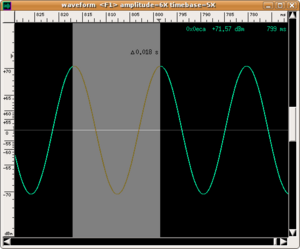
|
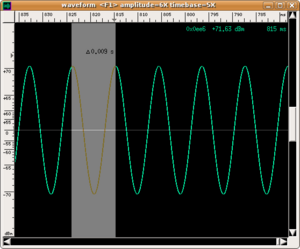
|
| audio |
|
|
| wave shape (one period is highlighted) |

|
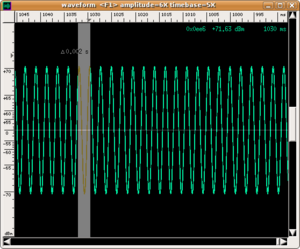
|
| audio |
|
|
Audible frequencies
The human ear can perceive a sound only if its frequency falls within a range from about 16Hz to 20000Hz; these values are called the limits of audibility. However, in music, we use a narrower range of frequencies - from 20 Hz to 4000 Hz - which correspond to the seven octaves of the piano. In fact, the human ear is most sensitive to this band of the sound spectrum. From this, we can deduce that music, an obviously artificial activity, was produced by human civilisation within the possibility of our perceptual system through a mechanism of cultural selection. We use the term cultural selection and not natural selection because the mechanism of Darwinian selection happens in an opposite fashion. Our perceptual system has been naturally structured to be able to perceive the natural sounds that allowed us a better chance of survival (e.g. approaching prey, rustling leaves, breathing, etc.). Since the natural environment is similar for many species, it is not by chance that the range of audibility is rather homogeneous across various animal species. While the study of the relationship between the development of music, the human brain and human culture is both fascinating and complex, it does go beyond the scope of this website.
| Animal |
Frequency range (Hz) |
| dog |
10-10000 |
| bat |
1000-100000 |
| cat |
100-10000 |
| dolphin |
10000-100000 |
|
On the left, we present the frequency ranges in Hz of sounds audible to several animal species. Note the large difference between dolphins and bats due to the fact that these species developed mechanisms of localisation and communication based on the property of "hearing" high frequency sound waves. If you are interested in further study on this topic, visit the section on Infrasound and ultrasound.
|
In conclusion, not all periodical "perturbations" that propagate in space are detectable by the human ear; for example, an oscillating ball hanging on a string ...
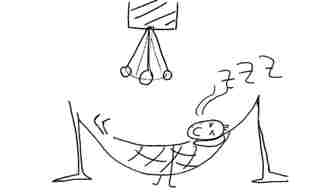
|

|
| will not disturb our sleep, unless ... |
... the oscillation frequency of the pendulum is greater than 20 Hz. |
The wings of a hummingbird move with such a frequency (about 50 beats per second) that we can perceive the movement as a sound wave (as a "hum", hence the name).
The wavelength of a sound
| frequency (Hz) |
wavelength (cm) |
| 20 |
1700 |
| 200 |
170 |
| 2000 |
17 |
| 20000 |
1.7 |
|
Having established the range of audible frequencies, it is useful to calculate the wavelength of corresponding sounds. Assuming the speed  of a sound in air equals 340 m/s, recalling (with regards to this, see the page on How is a wave described?) that of a sound in air equals 340 m/s, recalling (with regards to this, see the page on How is a wave described?) that
 , ,
and substituting for  a lower limit (20 Hz) and an upper limit (20000 Hz), we obtain wavelengths for sound waves ranging from about 1.7 cm (very high sounds at high frequency) to 17 metres (very low sounds at low frequency)! a lower limit (20 Hz) and an upper limit (20000 Hz), we obtain wavelengths for sound waves ranging from about 1.7 cm (very high sounds at high frequency) to 17 metres (very low sounds at low frequency)!
|
This fact is very important because it
- gives us a criterion relative to the ability of a sound wave to go around obstacles (e.g. our heads, a column, a building or a mountain). The criterion is the following: if the size of the obstacle is less than or equal to the wavelength of a sound, the obstacle usually cannot stop the sound that encounters it. In other words, it does not generate an area of sound shadow. For more on this, visit the pages on diffraction in general and sound diffraction in particular;
- gives us a criterion of perceptibility of the pitch of a sound in relation to the size of the environments in which the sound is produced:
-
- Is it possible to perceive the pitch of a sound with a wavelength of 17 metres in a 10x10-metre room?
- How can the periodicity of a wave be captured if the size of a room is not large enough to contain a single complete wave before it is reflected by the walls?
- Anyone, such as the author, who has had the opportunity to listen to an octobass (a type of large double bass that can emit sounds with a frequency close to 20 Hz) in a closed environment would have seriously doubted the musical quality of the instrument. It is barely possible to associate a sensation of precise pitch to the lowest notes. Perception would probably be better in the open air, where the sound wave can "better manifest its periodic character without there being any reflection phenomena present (think of the low notes of a Swiss horn, to which it is undoubtedly possible to associate a more precise sensation of pitch). For more information on the octobass, go to this link: http://www.xray.it/octo/
A dialogue: "On the perception of pitch of composite sounds"
Illustrating the physical and perceptual phenomena linked to the perception of a composite sound (i.e. a sound composed of the superposition of several harmonic waves) is so complex that we have chosen to resolve the problem by presenting it as a "dialogue". The participants in this dialogue are a Physicist-Musician (PM) and a Curious Surfer (CS), who has had the patience to meander through this website, has reached this page and has already read the first paragraph above.
CS: In the first paragraph, I learnt that the pitch of a pure sound is determined by its frequency. But what happens if the sound, though periodic with a frequency of  , is not pure? Is this always the case when a wave, even if it is periodic, does not have a sinusoid shape?
, is not pure? Is this always the case when a wave, even if it is periodic, does not have a sinusoid shape?
-
PM: Fourier's Theorem assures us that every periodic wave with a frequency of
 is composed of the superposition of a fundamental harmonic wave of the same frequency
is composed of the superposition of a fundamental harmonic wave of the same frequency  and harmonic waves having frequencies with integer multiples of
and harmonic waves having frequencies with integer multiples of  . These waves are called partial harmonics or simply harmonics. In this particular case, the perceptual system, even if it is simultaneously stimulated by sounds at various frequencies, does not actually perceive the distinct, individual sounds present but blends them into a single sound to which it can neatly attribute a sensation of pitch. Perceived pitch is the pitch of only the frequency fundamental
. These waves are called partial harmonics or simply harmonics. In this particular case, the perceptual system, even if it is simultaneously stimulated by sounds at various frequencies, does not actually perceive the distinct, individual sounds present but blends them into a single sound to which it can neatly attribute a sensation of pitch. Perceived pitch is the pitch of only the frequency fundamental  , as you can hear in this example.
, as you can hear in this example.
| periodic wave composed of 10 harmonics |
| wave shape |
spectrogram |
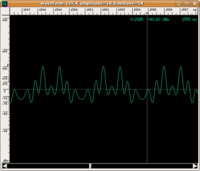
|
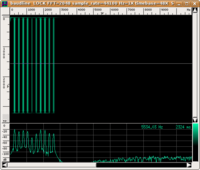
|
| complex sound with partial harmonics |
pure sound with equivalent pitch |
|
|
|
CS: What happens on a perceptual level to the information containing the upper partials, since they do not seem to contribute to the sensation of perceived pitch?
-
PM: The upper partials always contribute to another perceptual quality of sound: its timbre. Two sounds having the same fundamental frequency are perceived as different when their partial harmonics have different intensities. Pitch is certainly not the only attribute that we associate with sound. Think of the same note emitted by a violin and a trumpet.
But let's not digress; this topic is better treated on the page about the perception of timbre.
CS: OK. Anyway, I know that many instruments, particularly the percussions like the timpani, emit NON harmonic partials along with the fundamental and, sometimes, it is not possible to precisely establish the pitch of the sound being heard. Does this mean that partials contribute not only to timbre but also to perceived pitch?
- PM: That is an excellent question! We can answer it directly with an example. In the first column, you will find complex sounds having the same fundamental at 200 Hz with partials of equal intensities (therefore, we should perceive sounds with the same timbre). However, from first to last, the partials have a "less harmonic" ratio. This is a stretched octave because the ratio between the fundamental and the first harmonic is no longer 2:1, as in the first sound, but respectively 2.01:1, 2.05:1 and 2.1:1. Surprisingly, even though they have the same fundamental, the complex anharmonic sounds are perceived at different pitches. To facilitate our answer, we have added a second column with pure reference sounds that have approximately the same perceived pitch as each complex sound. However, observe that the complex sound does not contain any frequencies similar to the pitch of the perceived sound.
| Complex sound |
Pure sound at perceived pitch |
|
|
|
|
|
|
|
|
|
|
|
|
Beats are particularly evident within all inharmonic sounds, which makes them rather annoying. For more information on this topic, visit the pages on Beats, Critical bands and the Physiology of the auditory system.
CS: Is this why, when I hear drum cymbals or bells, I don't perceive any notes or they are very imprecise?
-
PM Basically, yes. Many musical instruments, especially the winds and strings, "automatically" emit sounds with partial harmonics. The geometry of these instruments allows them to select only certain wavelengths and, therefore, multiple frequencies of the fundamental frequency. If you are interested in understanding how this happens, visit the pages about Interference between reflected waves and Eigenfrequencies. There is, and not by chance, a precise link between the size of an instrument and the type of "note" that it can emit! On the contrary, musical instruments such as the percussions can oscillate according to NON multiple frequencies of the fundamental frequency (the partials are not harmonic). This is essentially because their vibrating part is two-dimensional (as opposed to the strings or the air columns of wind instruments that are substantially one-dimensional). If you wish to see how membranes (e.g. the skin of a drum) vibrate, visit the pages on Normal modes, Stationary waves or Percussion instruments. Concerning bells, an entire chapter could be written on the age-old and difficult art of forging them so that their partials are the most harmonic possible.
CS: "Therefore, if I have understood, the percussions emit non periodic sounds (if they were periodic, according to Fourier's theorem, all the partials should be harmonics). Is this what distinguishes (musical) sounds from noises: being produced or not by a periodic wave?
- PM: At first glance, we could say that, even though I would prefer to take a softer position on the topic. Listen to these examples: are they sounds or noises? Do you still perceive a pitch, even if less clearly?
| Wave shape |
Spectrogram |
Audio |
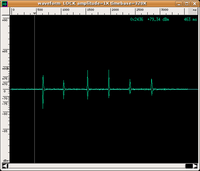
|
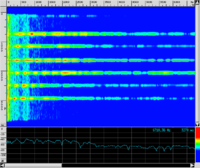
|
|

|

|
|
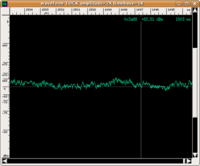
|
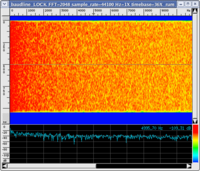
|
|
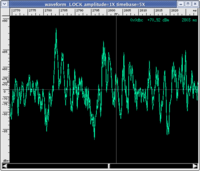
|
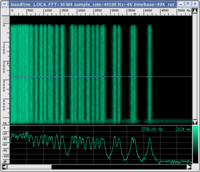
|
|
CS: I understand that, as a musician, you tend to overrate the case in which a sound source is a musical instrument, however, nowadays a computer is able to "synthesize" sounds containing frequencies of any value. Does the perceptual system not become "confused" when the total of the frequencies that compose a sound wave is completely random?
-
PM: The confusion of the perceptual system is probably what we call noise. If you are interested in further study on these aspects, you can visit the page on Sound or noise?. You will discover that, paradoxically, there are several types of noises; as if the "chaos" of the frequencies making up a sound wave had a type of hierarchical "order".
CS: So, if partials have an influence on perceived pitch, is it possible to get rid of the fundamental completely?
-
PM: In effect, given a harmonic series without a fundamental, the perceptual system is able to "reconstruct it"; i.e. the pitch that the fundamental would have had is attributed to a complex sound with partial harmonics even without the fundamental being present! You can hear this for yourself in the following examples, in which a complex harmonic sound with a fundamental at 300 Hz is progressively filtered with a high-pass filter, in order to progressively suppress its lower partials. You will note that, while its timbre changes rather drastically from one sample to another, the pitch seems to remain the same almost to the end. Although, an attentive ear could easily identify the partial of greatest intensity in each sound. In the last two sounds, the sensation of pitch becomes unstable and many listeners "tune into" a new fundamental. Next to the complex sounds, we present the pure sound of perceived pitch equivalent to the fundamental and, in the last two cases, the most intense harmonic.
| Spectrum |
Filtered complex sound |
Pure sound with equivalent pitch |

|
|
|
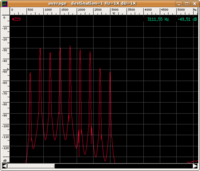
|
|
|

|
|
|
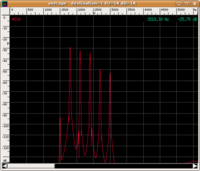
|
|
|

|
|
|
In these cases, we are referring to the virtual pitch of sounds. You will find another example on the page about Acoustic effects and illusions. Furthermore, you can experiment with this phenomenon directly by visiting the page on Guides to using the Fourier applet, where you will find instructions for conducting a simple experiment in our virtual laboratory. The explanation of the phenomenon by which our perceptual system can create virtual pitches is still an object of debate (for more on this, visit the page on the physiology of the auditory system). However, the presence of the effect is undeniable. It is used:
-
- in instruments that must generate very low frequency notes (e.g. the bassoon, double bass, tuba and piano) with a very weak fundamental harmonic due to problems with impedance matching;
- in radio transmission and sound reproduction where low frequencies eliminated by electronic transmission systems are partly reconstructed in the listener's perceptual system;
- in the music theory of J. P. Rameau in his "Traité de l'harmonie" of 1722, where a theory on the consonance of major triads is elaborated based on the presence of a low fundamental (which is none other than our missing fundamental harmonic).
CS: This property of "blending" sounds made up of harmonic partials into a single sound is extraordinary! Obviously, I would expect that if the partials were not harmonic, we would hear more sounds at the same time interpreting each partial as a "pure sound". Am I correct?
- PM: The answer is very elaborate:
-
- the loss of the ability of fusion is gradual. Many experiments have been conducted, from which we have gathered that if the brain is stimulated by partials with non-exact harmonic ratios, in order to recognise harmonic configurations, it seems to adopt two complementary strategies that use:
- the recognition of a "pattern" similar to a harmonic one for the partials (those of lower order) which excite distinct areas of the basilar membrane and for this reason they are called resolved (Goldstein [1]);
- the interaction of the partials of higher order that excite the same area of the basilar membrane (this is why they are called non-resolved) give rise to a beat phenomenon in the membrane which allows for perception of a difference tone (Schouten);
In this example from A. Frova, [2] four partials having quasi-harmonic ratios are superimposed:
| Frequency of the partials (Hz) |
Divisor (Hz) |
| 630 |
210 |
| 830 |
207.5 |
| 1030 |
206 |
| 1230 |
205 |
|
|
- where the divisor was obtained by dividing the frequency of the partials by 3, 4, 5 and 6 respectively; a reasonable common divisor is about 207 Hz. However, in an experiment that we conducted, the virtual perceived pitch was about 230 Hz (perhaps this value is obtained by the recognition of a shifted harmonic configuration according to the dictates of the first strategy). Obviously, if the frequencies differ greatly from the harmonic configuration, the brain loses its ability to attribute a well defined pitch to a sound.
-
- using partials with very close frequencies (e.g. 200 to 210 Hz), we still have a well defined sensation of pitch (equal to the average frequency) but we also have a new phenomenon: the loudness of the sound seems to "fluctuate" producing that very particular effect known as tremolo. This is the phenomenon of beats. If you wish to "hear" it, visit our virtual laboratory, where you will find a readymade experiment.
-
- if the distance between the frequencies of the partials increases, the sound loses its beating character and assumes a dry and unpleasant timbre. You can perceive two distinct sounds (what is called a bichord in music) only above a certain separation of frequencies. You will find the explanation for this fact in the theory of critical bands
-
- there are other masking phenomena that impede our perceptual system from hearing sounds with well-separated frequencies executed simultaneously when one of the two sounds is much louder than the other.
CS: Oh my goodness! I did not expect to disturb such a hornet's nest! However, I still have one more question: how does all this "work"? Yes, you have described to me what happens in various experiments but what exactly happens in the human perceptual system?
-
PM: Now you are asking me too much! Here we need my friend the PPM (Physiologist-Physicist-Musician). Please consult their comments here.
Musical intervals
In the playing of music, the ability to associate the correct pitch (or frequency) with a given note is actually of little importance. This ability is called "perfect pitch" and there are very few musicians who can name the corresponding note when they hear an isolated sound in any context. This fact often surprises non-musicians: it would be like saying that a painter cannot recognise the individual colours that they use to create their paintings. Actually, in the playing of music, it is much more important to be able to recognise the interval formed between two consecutive notes and to recognise and use its quality of being "consonant" or "dissonant".
The terms consonance and dissonance seem to introduce elements of subjectivity (which we will see are definitely present) in the judgement of various intervals. However, there also are precise, objective physical and physiological bases that have allowed all civilisations in different times and places to determine privileged intervals to use in their music.
The absolute first for consonance is the interval of the octave. The four sounds that you heard in the first paragraph of this page are separated two at a time by an interval of an octave. We may ask what type of relationship must occur between the frequencies of two sounds to give rise to an interval of an octave. The following table gives the differences and frequency ratios
 |
 |
 |
 |
| 55 |
110 |
55 |
2 |
| 110 |
220 |
110 |
2 |
| 220 |
440 |
220 |
2 |

Upper part: a piano keyboard as we know it. The distance between two keys is proportional to the
ratio of their frequencies. Lower part: how it would appear if the distance were proportional to the
difference of their frequencies.
The results leave no doubts: the perceived interval is an octave if the ratio between the two frequencies is exactly double. In general, to our perceptual system
- two intervals are considered equal if the ratio (and not the difference) of the frequencies of the sounds of the interval is identical.
Amongst the perceived intervals, along with the octave, other consonants have been determined including the natural perfect fifth, for which the frequency ratio is 3/2 (instead of 2/1 like the octave), and the natural perfect fourth for which the frequency ratio is 4/3.
The theory of musical intervals quickly leads to the construction of a musical scale. If we want to order sounds in a musical progression (scale) with all "steps" (intervals) being equal, which starts from the lowest note of the octave and ends with the highest, we must use sounds with frequencies in geometric progression and not in arithmetic progression). We observe that in the normal steps of a scale, the difference (and not the ratio) between absolute pitches (with respect to the base of the scale) of two consecutive steps remains constant!
Obviously, this mathematical criterion does not always produce such "consonant" intervals as the octave. Historically, the choosing of frequencies (and, therefore, of notes) to insert in an octave that will compose a musical scale has been based on aesthetic criteria related to the consonance of the intervals within the scale itself. The history of how various civilisations produced different divisions of the octave is absolutely fascinating and interwoven with considerations regarding "numerology", aesthetics and the technicality and physicality of constructing musical instruments. The same is true for the study of the evolution of music over time for each individual civilisation.
More information on this topic can be found in the following sections: From monochords to musical scales, Pythagorean scale, Natural scale and Equal temperament.
In-depth study and links
- ↑ an excellent article that succinctly describes the two strategies can be found at this page of the University of Sussex
- ↑ from A. Frova Fisica nella musica Zanichelli, 1999, page 144































